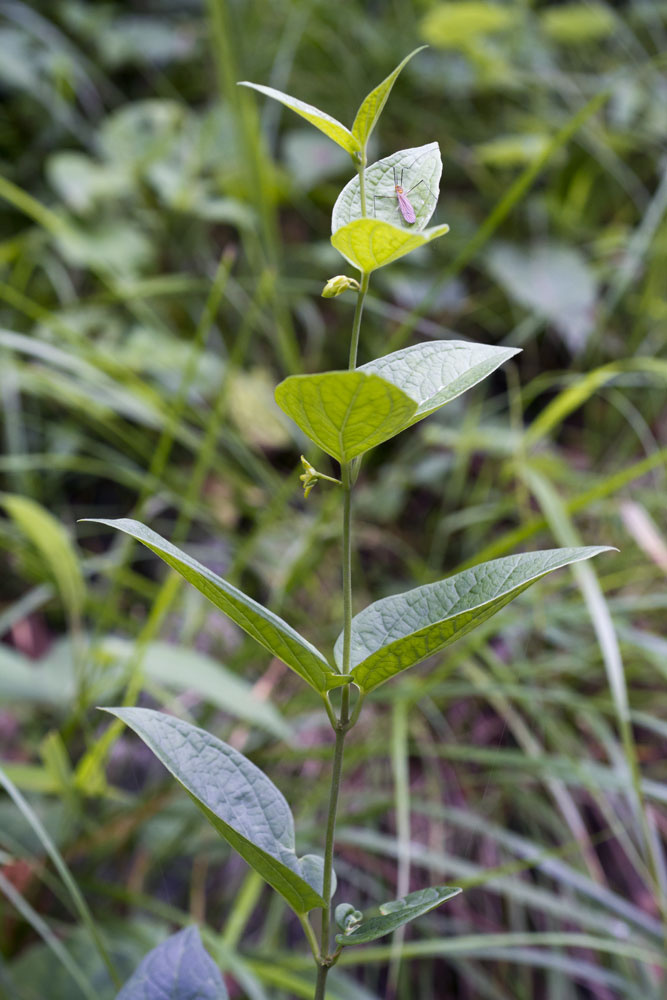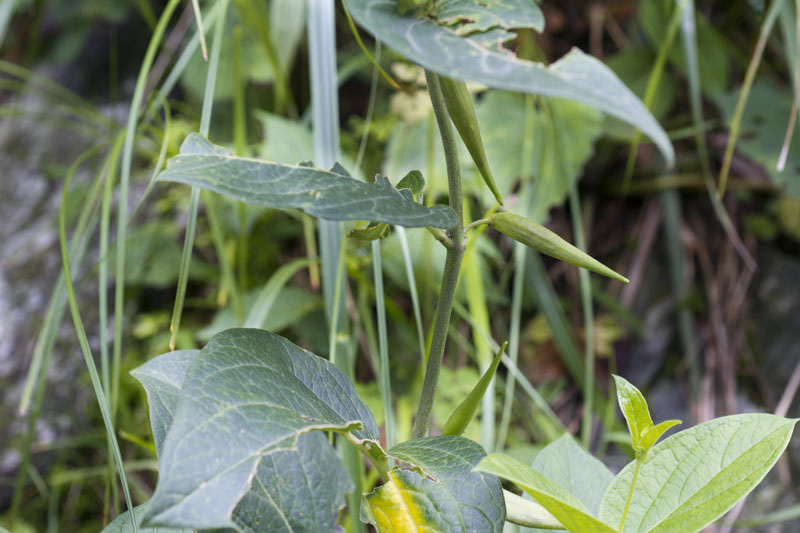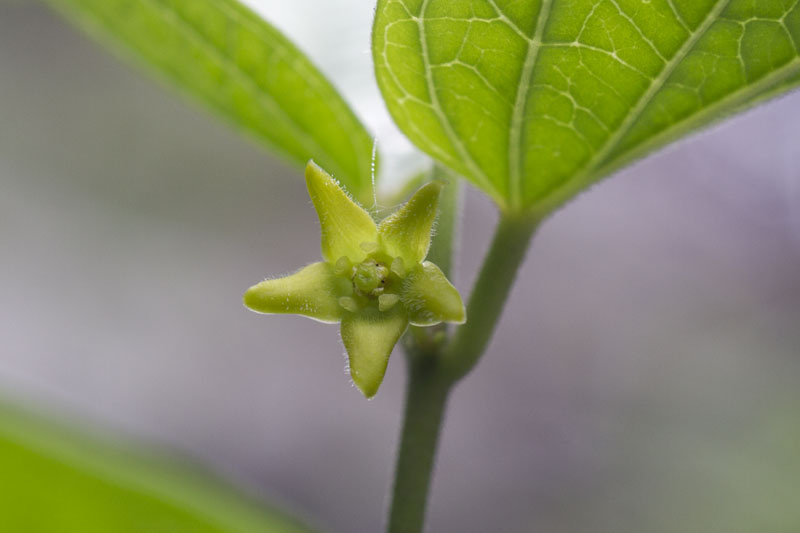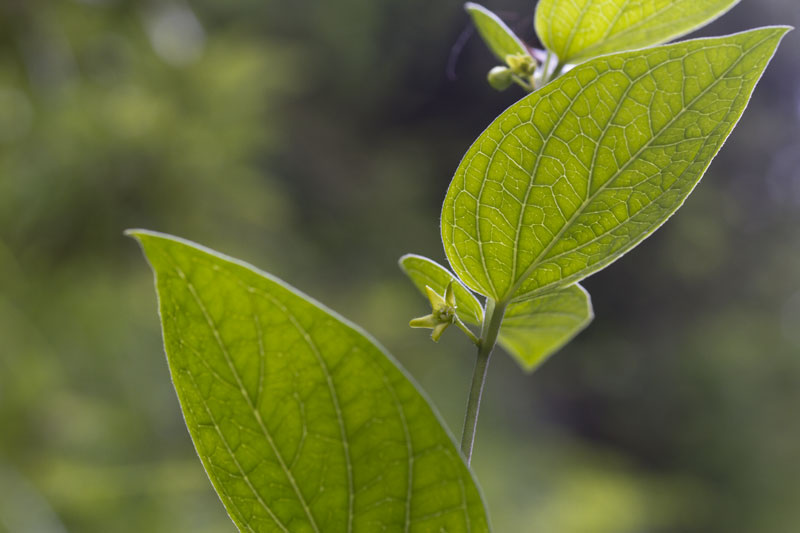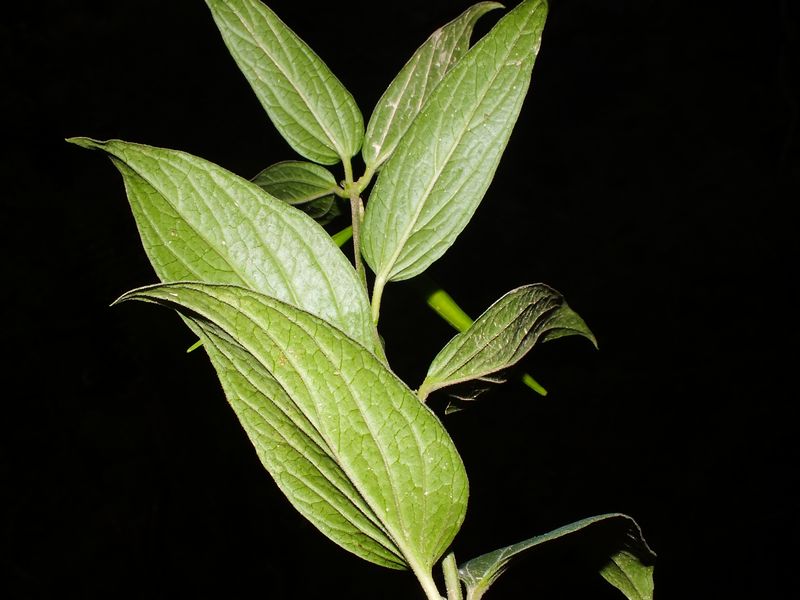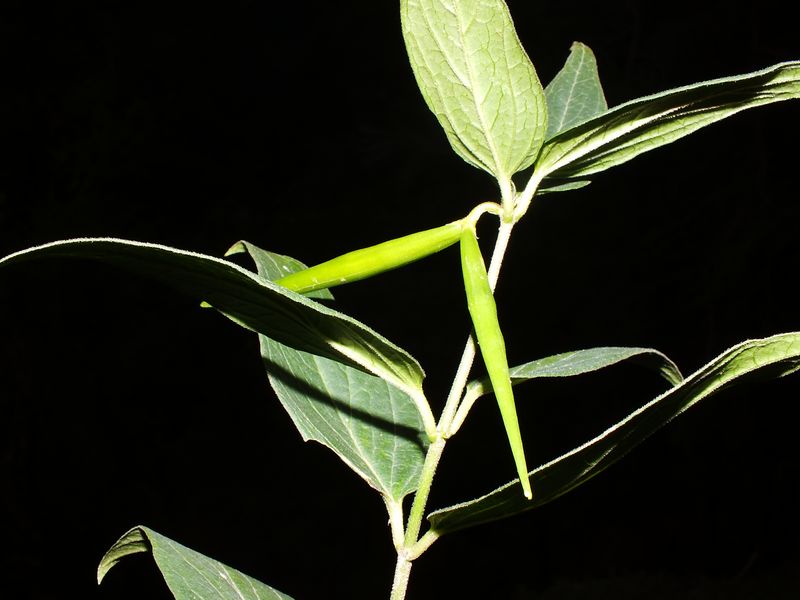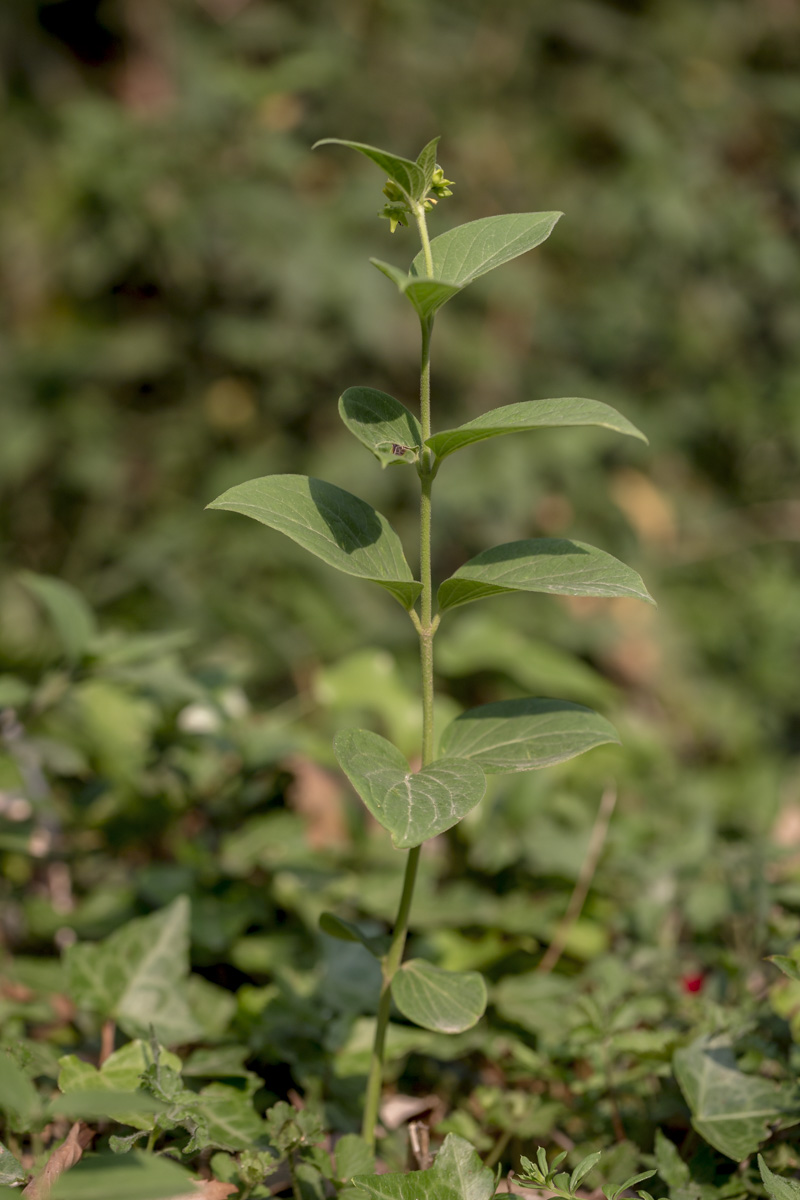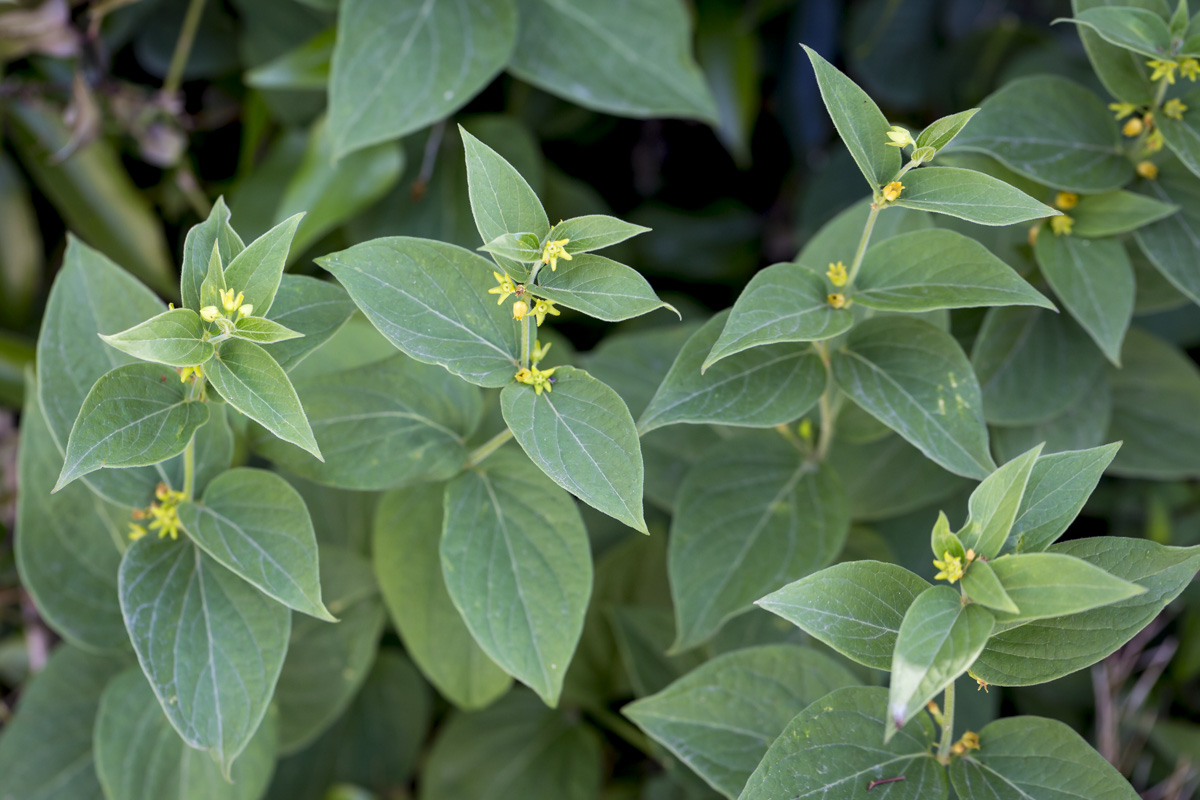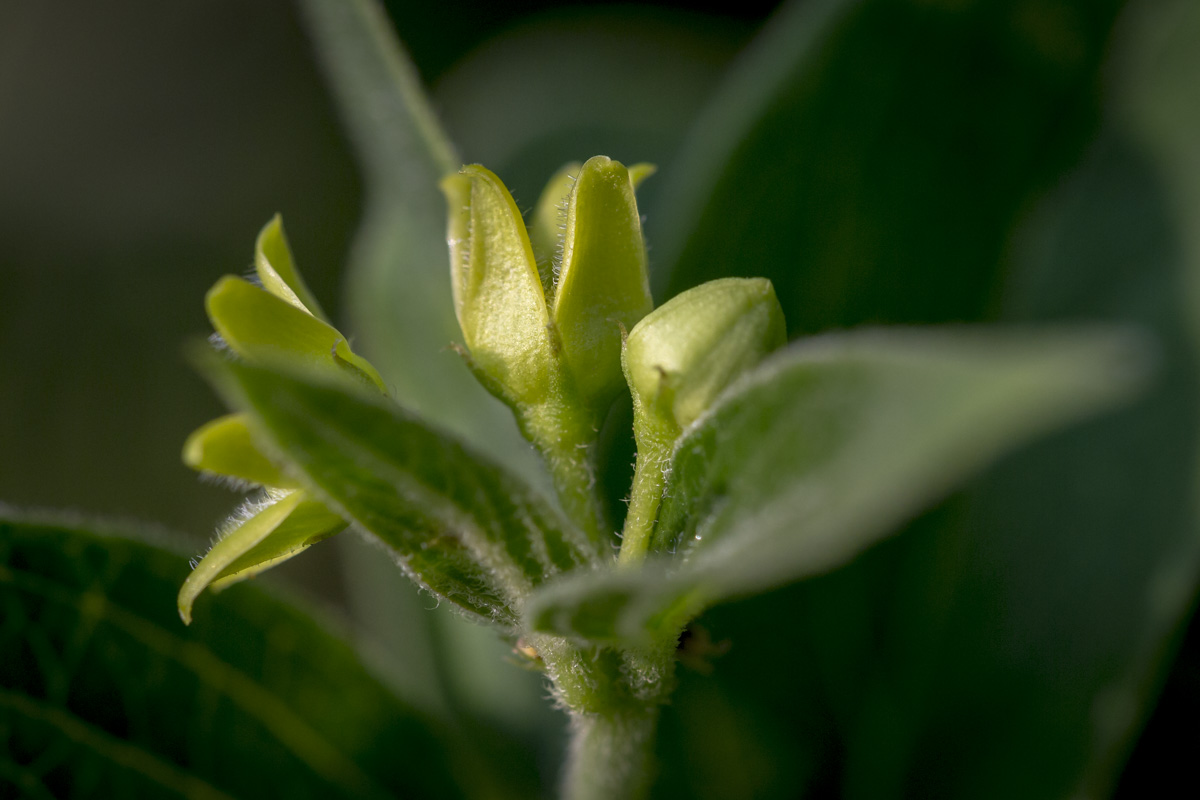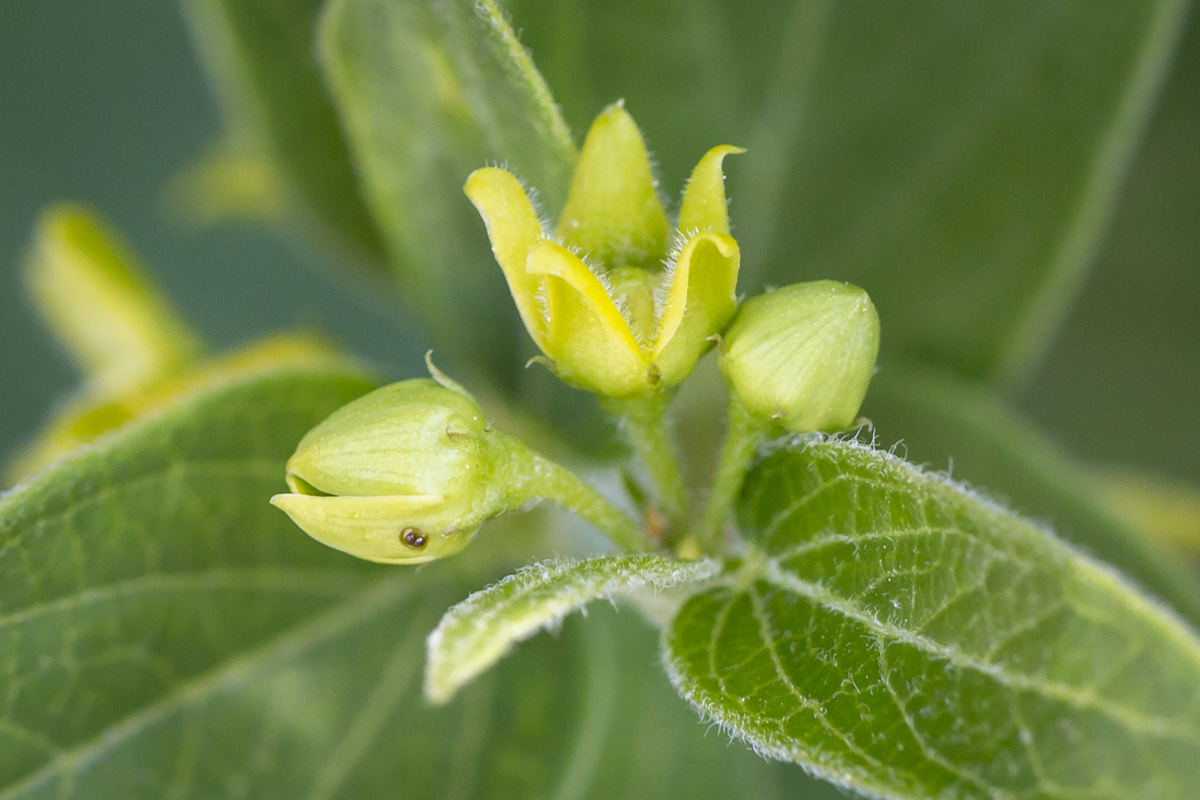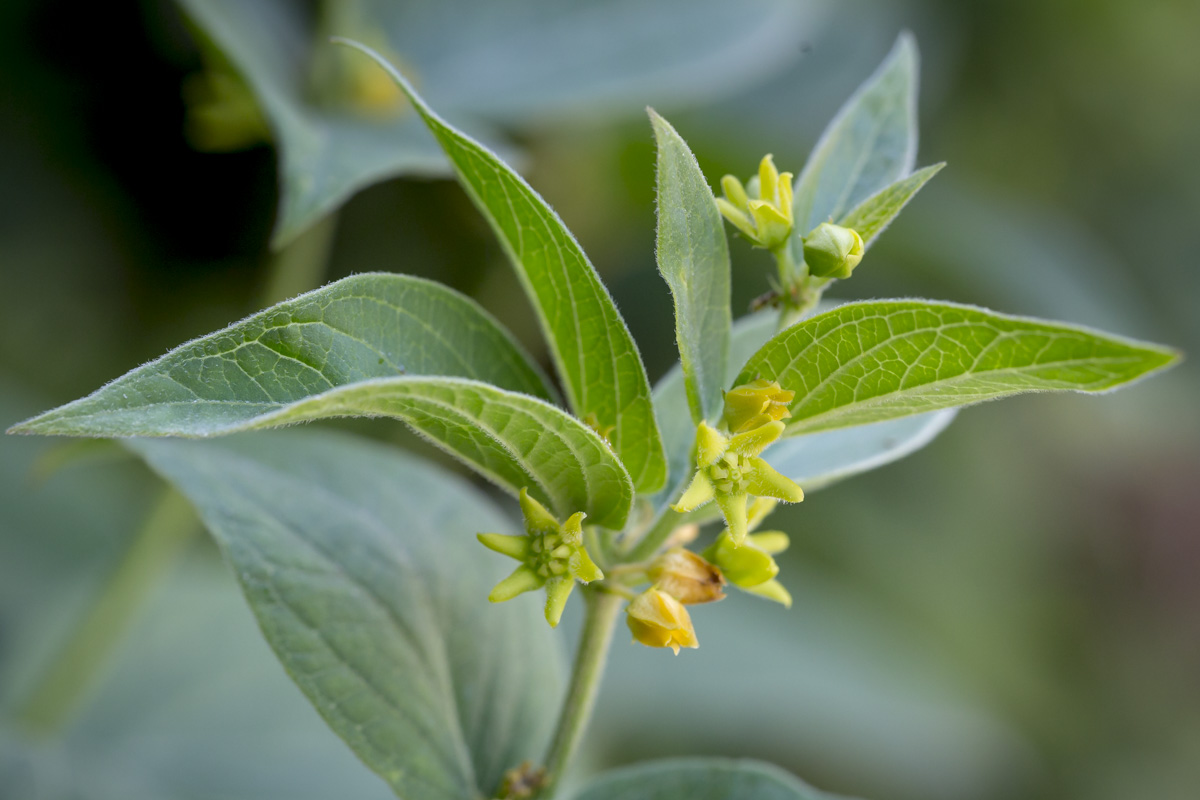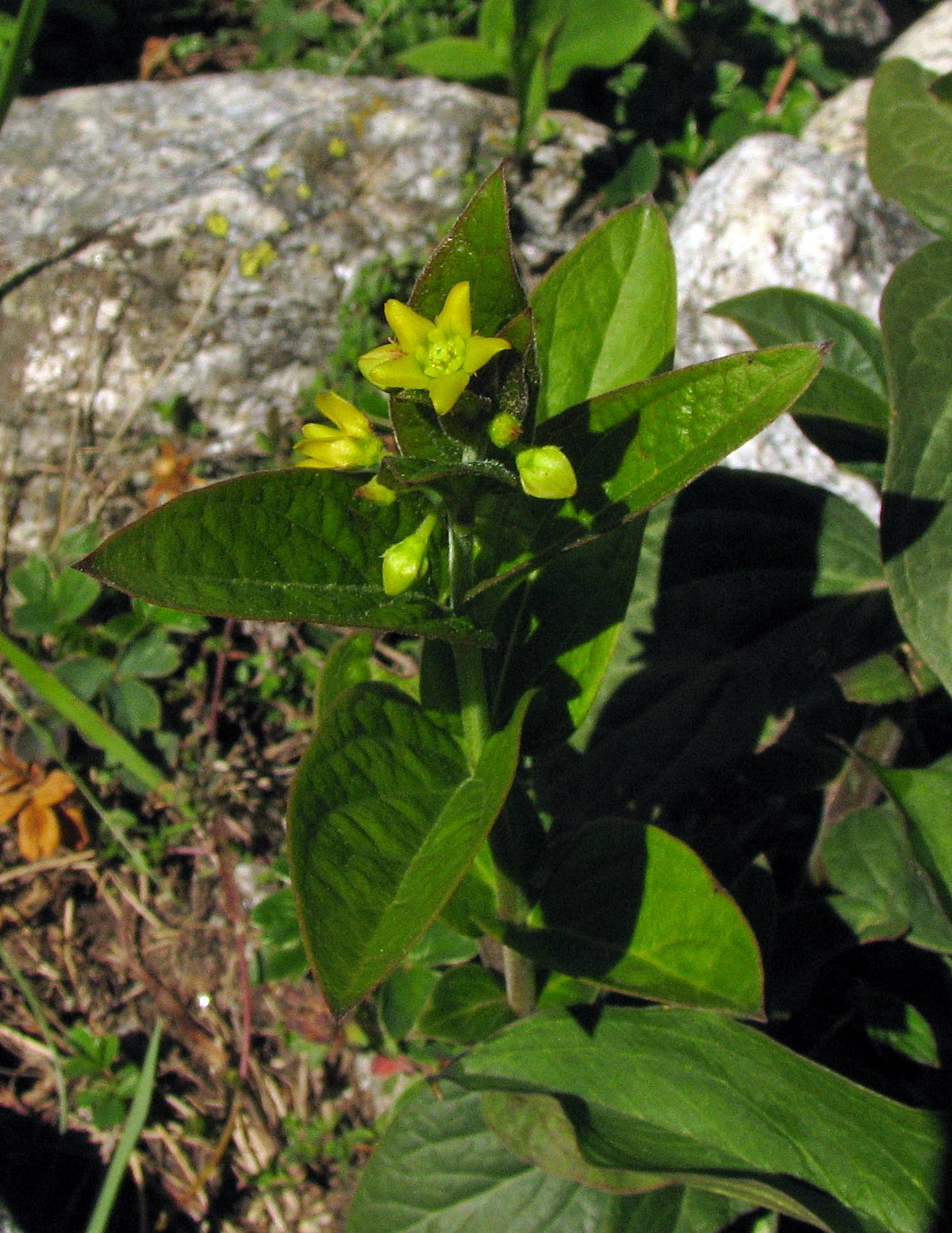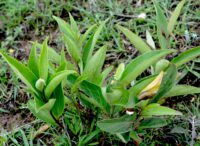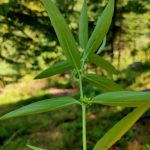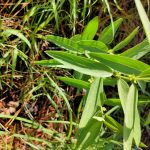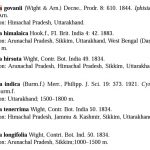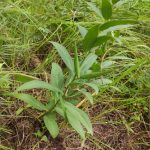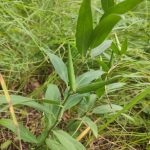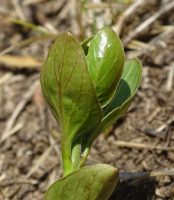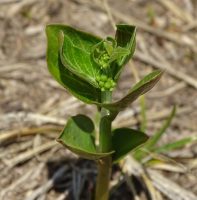|
Vincetoxicum kenouriense (Wight) Wight, Icon. Pl. Ind. Orient., pl. 1614. 1850 (syn: Cynanchum kenouriense Wight, Contr. Bot. India 58. 1834.) as per Taxonomy of Vincetoxicum s.str. (Asclepiadoideae, Apocynaceae) from southern Asia including three new species and resurrected names– Sayed Afzal Shah, Amir Sultan, Jun Wen , Zahid Ullah , Surat Un Nisa, Zhumei Ren , Muhammad Maqsood Alam, Javed Iqbal, Abdul Samad Mumtaz – June 2021PhytoKeys 179(1):35-73;
. Endemic to a long geographic range in the Hindukush Himalayas from Bhutan in the east to Pakistan in the west. The western limit of this species is district Swat (Khyber Pakhtunkhwa province), Pakistan. It occurs on higher elevations between 1500 and 3000 m. The habitats of the species are commonly the Himalayan moist temperate forests (evergreen forests of conifers between 1500 to 3000 m elevations), rarely subalpine or open alpine lands (above 3000 m). We collected it from open stony alpine slopes and stream side slopes in a V-shaped mountain valley. The associated vegetation was either alpine herbs or conifers, and herbaceous to shrubby flora as per Taxonomy of Vincetoxicum s.str. (Asclepiadoideae, Apocynaceae) from southern Asia including three new species and resurrected names– Sayed Afzal Shah, Amir Sultan, Jun Wen , Zahid Ullah , Surat Un Nisa, Zhumei Ren , Muhammad Maqsood Alam, Javed Iqbal, Abdul Samad Mumtaz – June 2021PhytoKeys 179(1):35-73; ..
Another plant for ID ABJUL01/38 : 9 posts by 3 authors. 5 images. I just edited these photos from my earlier walk. I found this growing at about 2300m. The fruit was like a green chilly. Please help identify it.
Above Mcleodganj, Dharamshala, HP
2300m
09 July, 2016 It may be Cynanchum sp. (family Asclepidaceae). Looks like an Apocynaceae. Thank you … I saw this plant on my walk on Sunday again. There were no flowers this time but the beans were in pairs. I plucked one leaf to check for the milky sap but there was none. I am not sure what I did wrong. Perhaps I should have broken the leaf in stead of expecting milky sap from the leaf stem. Not all Apocynaceae has milky latex. Not Asclepiadaceae is merged under Apocynaceae. Thanks, … I think seem to match with images at Vincetoxicum hirundinaria Medik. syn. Cynanchum vincetoxicum Thanks, …, asking for review at Vincetoxicum canescens ABMAY01/2018
I agree with him for Vincetoxicum canescens as per keys, details and photographs at
Looks different from Vincetoxicum hirundinaria as per
http://www.luontoportti.com/suomi/en/kukkakasvit/swallow-wort
http://eol.org/pages/488017/overview Taking it as Vincetoxicum kenouriense (Wight) Wight, Icon. Pl. Ind. Orient., pl. 1614. 1850 (syn: Cynanchum kenouriense Wight, Contr. Bot. India 58. 1834.) as per Taxonomy of Vincetoxicum s.str. (Asclepiadoideae, Apocynaceae) from southern Asia including three new species and resurrected names– Sayed Afzal Shah, Amir Sultan, Jun Wen , Zahid Ullah , Surat Un Nisa, Zhumei Ren , Muhammad Maqsood Alam, Javed Iqbal, Abdul Samad Mumtaz – June 2021PhytoKeys 179(1):35-73 Flora of Chakrata 2012: Herb for Id, Similar herb uploaded in VOF week: 8 images. I hope Cynanchum vincetoxicum Thanks, …, asking for review at Vincetoxicum canescens ABMAY01/2018
I agree with him for Vincetoxicum canescens as per keys, details and photographs at
Looks different from Vincetoxicum hirundinaria as per
Taking it as Vincetoxicum kenouriense (Wight) Wight, Icon. Pl. Ind. Orient., pl. 1614. 1850 (syn: Cynanchum kenouriense Wight, Contr. Bot. India 58. 1834.) as per Taxonomy of Vincetoxicum s.str. (Asclepiadoideae, Apocynaceae) from southern Asia including three new species and resurrected names– Sayed Afzal Shah, Amir Sultan, Jun Wen , Zahid Ullah , Surat Un Nisa, Zhumei Ren , Muhammad Maqsood Alam, Javed Iqbal, Abdul Samad Mumtaz – June 2021PhytoKeys 179(1):35-73 Yes …, you are right Flora of Chakrata 2012: Herb for Id: 8 images. I am resending this for id, this looks like an Apocyanaceae member…id please Should this be Cyananchum vincetoxicum…. I am agree with … Thanks, …, asking for review at Vincetoxicum canescens ABMAY01/2018
I agree with him for Vincetoxicum canescens as per keys, details and photographs at
Looks different from Vincetoxicum hirundinaria as per
Taking it as Vincetoxicum kenouriense (Wight) Wight, Icon. Pl. Ind. Orient., pl. 1614. 1850 (syn: Cynanchum kenouriense Wight, Contr. Bot. India 58. 1834.) as per Taxonomy of Vincetoxicum s.str. (Asclepiadoideae, Apocynaceae) from southern Asia including three new species and resurrected names– Sayed Afzal Shah, Amir Sultan, Jun Wen , Zahid Ullah , Surat Un Nisa, Zhumei Ren , Muhammad Maqsood Alam, Javed Iqbal, Abdul Samad Mumtaz – June 2021PhytoKeys 179(1):35-73 Yes My Pending Identifications: Chakrata- Cynanchum ??:: NS MARCH 23 : 4 posts by 2 authors. Attachments (4). Thanks, …, asking for review at Vincetoxicum canescens ABMAY01/2018
I agree with him for Vincetoxicum canescens as per keys, details and photographs at
Looks different from Vincetoxicum hirundinaria as per
Taking it as Vincetoxicum kenouriense (Wight) Wight, Icon. Pl. Ind. Orient., pl. 1614. 1850 (syn: Cynanchum kenouriense Wight, Contr. Bot. India 58. 1834.) as per Taxonomy of Vincetoxicum s.str. (Asclepiadoideae, Apocynaceae) from southern Asia including three new species and resurrected names– Sayed Afzal Shah, Amir Sultan, Jun Wen, Zahid Ullah, Surat Un Nisa, Zhumei Ren, Muhammad Maqsood Alam, Javed Iqbal, Abdul Samad Mumtaz – June 2021PhytoKeys 179(1):35-73 Yes Vincetoxicum canescens ABMAY01/2018 : 4 posts by 2 authors. Attachments (10) I found this milkweed near home this time. I had photographed it earlier and posted to the group here. Revisiting the ID, I found it to be not V. hirundinaria as the description in Flowers of the Himalaya states: ‘Corolla c. 5mm across, with nearly hairless triangular lobes‘ and ‘calyx-lobes triangular, nearly as long as corolla‘ for V. hirundinria.
The plants here have hair on the inside of corolla lobes and calyx is much shorter than the corolla. The description matches more closely to the Cynanchum glaucum in Flora Simlensis: ‘Calyx about half as long as the corolla. Corolla hairy on the inner surface.‘
Tibetan Medicinal Plant treats C. glaucum (V. glaucum) as a synonym of V. canescens and describes it as:
‘Corolla yellow or green fading to greenish orange; tube approximately 1mm; lobes ovate, 2-3 x 1.5 mm, hairless outside, sparsely hirsute inside; sepals less than 1mm.’
But the authors treat it as part of the larger V. hirundinaria group perhaps because medicinal properties are similar.
FOP says: ‘Perennial undershrub, c. 15-70 cm tall, erect to twining, pubescent. Leaves 4-7 cm x 1.8-6 cm, ovate-lanceolate or cordate, glabrous to pubescent, entire, acute to acuminate. Flowers clustered in the leaf axils. Pedicels 4-5 mm long. Calyx lobes c. 1.5 mm long, lobes oblong to lanceolate, acute. Corolla c. 4 mm long, cream to greenish, lobes hairy on the inner surface. Corona lobes 5, obtuse. Follicles 5-6 x 1-1.5 (-2) cm, gradually tapering towards the tip.
Fl. Per.: June-September.‘
I made some measurements too:
Plants 40-80cm tall, pubescent. Leaves c. 5cm x 7cm, bottom ones smaller and blunt-tipped, hairy on the nerves underneath and on the edges. Flowers greenish-yellow c. 1cm across, 5-7 petals (lobes), smooth outside but hairy on the inside; sepals narrow c. 1.5-2mm each. Pedicels 4-5mm.
And since the plants are flowering at the moment, I can say Late-April is more correct than June.
Considering the above information, I would like to think that the plants here (and on our site) are V. canescens. Please advise.
Vincetoxicum canescens
Near Dal Lake, Dharamshala, HP
1800m approx.
30 April 2018
Thanks, …, I agree with you for Vincetoxicum canescens as per keys, details and photographs at
Looks different from Vincetoxicum hirundinaria as per
Taking it as Vincetoxicum kenouriense (Wight) Wight, Icon. Pl. Ind. Orient., pl. 1614. 1850 (syn: Cynanchum kenouriense Wight, Contr. Bot. India 58. 1834.) as per Taxonomy of Vincetoxicum s.str. (Asclepiadoideae, Apocynaceae) from southern Asia including three new species and resurrected names– Sayed Afzal Shah, Amir Sultan, Jun Wen, Zahid Ullah, Surat Un Nisa, Zhumei Ren, Muhammad Maqsood Alam, Javed Iqbal, Abdul Samad Mumtaz – June 2021PhytoKeys 179(1):35-73 Seen this small erect shrub en-route Vasundhara falls from Mana village. Again Beautiful Shot of rare plant Looks different from Vincetoxicum hirundinaria as per
http://www.luontoportti.com/suomi/en/kukkakasvit/swallow-wort
http://eol.org/pages/488017/overview Taking it as Vincetoxicum kenouriense (Wight) Wight, Icon. Pl. Ind. Orient., pl. 1614. 1850 (syn: Cynanchum kenouriense Wight, Contr. Bot. India 58. 1834.) as per Taxonomy of Vincetoxicum s.str. (Asclepiadoideae, Apocynaceae) from southern Asia including three new species and resurrected names– Sayed Afzal Shah, Amir Sultan, Jun Wen, Zahid Ullah, Surat Un Nisa, Zhumei Ren, Muhammad Maqsood Alam, Javed Iqbal, Abdul Samad Mumtaz – June 2021PhytoKeys 179(1):35-73 Vincetoxicum hirundinaria Medik. (Asclepiadaceae) from Uttarakhand : Attachments (2). 5 posts by 4 authors. Attaching mine pics of the plant, from Chakrata, if only the id is rightly achieved..
This should be Vincetoxicum canescens as per images and details herein.
Looks different from Vincetoxicum hirundinaria as per
Taking it as Vincetoxicum kenouriense (Wight) Wight, Icon. Pl. Ind. Orient., pl. 1614. 1850 (syn: Cynanchum kenouriense Wight, Contr. Bot. India 58. 1834.) as per Taxonomy of Vincetoxicum s.str. (Asclepiadoideae, Apocynaceae) from southern Asia including three new species and resurrected names– Sayed Afzal Shah, Amir Sultan, Jun Wen, Zahid Ullah, Surat Un Nisa, Zhumei Ren, Muhammad Maqsood Alam, Javed Iqbal, Abdul Samad Mumtaz – June 2021PhytoKeys 179(1):35-73 Yes SK1981 07 June 2019 : 6 posts by 2 authors. Attachments (9)- around 750 kb each.
Location: Chandragiri, Kathmandu, Nepal
Altitude: 2284 m.
Date: 27 May 2019
Habit : Wild
Vincetoxicum hirundinaria Medik. ??
This should be Vincetoxicum canescens as per images and details herein.
Looks different from Vincetoxicum hirundinaria as per
I checked this earlier and feel that it is not exactly matching. Sp. in the efi looks leaves are more hairy.
Vincetoxicum hirundinaria subsp. glaucum (Wall. ex Wight) H. Hara It is a syn. of V. conescens as per http://www.efloras.org/florataxon.aspx?flora_id=5&taxon_id=242354439 Taking it as Vincetoxicum kenouriense (Wight) Wight, Icon. Pl. Ind. Orient., pl. 1614. 1850 (syn: Cynanchum kenouriense Wight, Contr. Bot. India 58. 1834.) as per Taxonomy of Vincetoxicum s.str. (Asclepiadoideae, Apocynaceae) from southern Asia including three new species and resurrected names– Sayed Afzal Shah, Amir Sultan, Jun Wen, Zahid Ullah, Surat Un Nisa, Zhumei Ren, Muhammad Maqsood Alam, Javed Iqbal, Abdul Samad Mumtaz – June 2021PhytoKeys 179(1):35-73 Needs rethinking as characteristic distinct secondary and tertiary veins are missing. SK 2246 26 October 2019 : 7 posts by 3 authors. 4 images- 5 to 6 mb each.
Location: Lata Bahnjyang, Lalitpur
Date: 16 September 2019
Elevation: 2087 m.
Habit : Wild
Is it the same SK1981 07 June 2019. ??
Attachments (1)- 6 mb.
Attachments (1)- 5 mb. Attachments (1)- 6 mb. seed pods remind me of those from many of Apocynaceae family.
its possible its the same
Asclepiadaceae ??
Yes, appears so as per Vincetoxicum canescens
Don’t you have the habit image ? Taking it as Vincetoxicum kenouriense (Wight) Wight, Icon. Pl. Ind. Orient., pl. 1614. 1850 (syn: Cynanchum kenouriense Wight, Contr. Bot. India 58. 1834.) as per Taxonomy of Vincetoxicum s.str. (Asclepiadoideae, Apocynaceae) from southern Asia including three new species and resurrected names– Sayed Afzal Shah, Amir Sultan, Jun Wen, Zahid Ullah, Surat Un Nisa, Zhumei Ren, Muhammad Maqsood Alam, Javed Iqbal, Abdul Samad Mumtaz – June 2021PhytoKeys 179(1):35-73 I would suggest V. glaucum which has distribution in E. Himalayas, prominent venation off V. kenouriense is missing. . SK 2641 29 June 2020 : 10 posts by 2 authors. 8 images- 6 to 7 mb each.
Location: Latha Bhanjyang, Phulchoki
Date: 20 June 2020
Elevation: 2162 m.
Habitat: Wild
Tylophora sp, Vincetoxicum hirundinaria subsp. glaucum (Wall. ex Wight) H. Hara Taking it as Vincetoxicum kenouriense (Wight) Wight, Icon. Pl. Ind. Orient., pl. 1614. 1850 (syn: Cynanchum kenouriense Wight, Contr. Bot. India 58. 1834.) as per Taxonomy of Vincetoxicum s.str. (Asclepiadoideae, Apocynaceae) from southern Asia including three new species and resurrected names– Sayed Afzal Shah, Amir Sultan, Jun Wen, Zahid Ullah, Surat Un Nisa, Zhumei Ren, Muhammad Maqsood Alam, Javed Iqbal, Abdul Samad Mumtaz – June 2021PhytoKeys 179(1):35-73 . Location: Latha Bhanjyang, Phulchoki, Lalitpur, Nepal
Date: 20 June 2020
Altitude: 2128 m. Habitat : Wild
This looks slight difference from SK 2636 26 June 2020.
No, it something other than Vincetoxicum canescens But it is the same plants : SK 2246 26 October 2019 Yes, You are right. I got confused by habit and distorted pods. Taking it as Vincetoxicum kenouriense (Wight) Wight, Icon. Pl. Ind. Orient., pl. 1614. 1850 (syn: Cynanchum kenouriense Wight, Contr. Bot. India 58. 1834.) as per Taxonomy of Vincetoxicum s.str. (Asclepiadoideae, Apocynaceae) from southern Asia including three new species and resurrected names– Sayed Afzal Shah, Amir Sultan, Jun Wen, Zahid Ullah, Surat Un Nisa, Zhumei Ren, Muhammad Maqsood Alam, Javed Iqbal, Abdul Samad Mumtaz – June 2021PhytoKeys 179(1):35-73 Need to see Flowers and corona lobes to decide conclusively . Identification required.- Location: Kulgam j & k.: 3 high res. images.
Habit:Small herb. Flowers :star shaped yellow coloured
Location:Kulgam j&k. Vincetoxicum hirundinaria Medik. We have Vincetoxicum canescens– Here in Kashmir as per efloraofindia You have this sp. also in JK ! It is V. hirundinaria with corolla glabrous inside, In V. canescens it is densely hairy inside. Both occur in Kashmir. Corolla lobes are not clearly focused in the images, but I see some hairs. Going through the images in efi site I still fill this should be Vincetoxicum hirundinaria Medik. ! Can not say until we see a clear image showing the corolla lobes and an image showing its calyx. 3 images. Hairs are missing inside the corolla tube. I see lot of hairs on corolla loves. You do not see even a single hair on the corolla lobes at Vincetoxicum hirundinaria subsp. hirundinaria Taking it as Vincetoxicum kenouriense (Wight) Wight, Icon. Pl. Ind. Orient., pl. 1614. 1850 (syn: Cynanchum kenouriense Wight, Contr. Bot. India 58. 1834.) as per Taxonomy of Vincetoxicum s.str. (Asclepiadoideae, Apocynaceae) from southern Asia including three new species and resurrected names– Sayed Afzal Shah, Amir Sultan, Jun Wen, Zahid Ullah, Surat Un Nisa, Zhumei Ren, Muhammad Maqsood Alam, Javed Iqbal, Abdul Samad Mumtaz – June 2021PhytoKeys 179(1):35-73 Both are reported from Kashmir Pl. see 2021 publication: Yes …, I saw your paper just now, which supports my conclusion of the above plant being V. glaucum, as according to the above paper and POWO V. canescens does not occur in our area. Pl. check the floral images at page 57 of the publication. The paper cites my specimen from Harwan Kashmir (my Ph.D. research area) G. Singh 833 under V. kenouriense. So you agree for V. kenouriense? Further analysing detailed description:
In view, I feel it is Vincetoxicum kenouriense (Wight) Wight only. I checked all our observations. .
Vincetoxicum arnottianum (Wight) Wight ?? Please post open flower images. Unfortunately I don’t have flower images. I mean to say capture when it flower. Thank u sir. I think it is differed from Vincetoxicum arnottianum. Tylophora is more likely. What are the species reported from the area? What are the species reported from the area? Sir following Sp. reported from H.P:-
On checking all these species, Vincetoxicum canescens is possible. Venation not matching
Please have look at the leaf and fruiting images in the link. Closest I can go is Vincetoxicum canescens only. Taking it as Vincetoxicum kenouriense (Wight) Wight, Icon. Pl. Ind. Orient., pl. 1614. 1850 (syn: Cynanchum kenouriense Wight, Contr. Bot. India 58. 1834.) as per Taxonomy of Vincetoxicum s.str. (Asclepiadoideae, Apocynaceae) from southern Asia including three new species and resurrected names– Sayed Afzal Shah, Amir Sultan, Jun Wen, Zahid Ullah, Surat Un Nisa, Zhumei Ren, Muhammad Maqsood Alam, Javed Iqbal, Abdul Samad Mumtaz – June 2021PhytoKeys 179(1):35-73
Location: Phulchoki, Lalitpur, Nepal
Date: 20 June 2020
Altitude: 2257 m. Habitat : Wild
Vincetoxicum canescens (Willd.) Decne. or some susp.??
I think this should be Vincetoxicum hirundinaria Medik. of Checklist of Nepal as per keys in Flora of Pakistan as Corolla lobes glabrous within. Taking it as Vincetoxicum kenouriense (Wight) Wight, Icon. Pl. Ind. Orient., pl. 1614. 1850 (syn: Cynanchum kenouriense Wight, Contr. Bot. India 58. 1834.) as per Taxonomy of Vincetoxicum s.str. (Asclepiadoideae, Apocynaceae) from southern Asia including three new species and resurrected names– Sayed Afzal Shah, Amir Sultan, Jun Wen , Zahid Ullah , Surat Un Nisa, Zhumei Ren , Muhammad Maqsood Alam, Javed Iqbal, Abdul Samad Mumtaz – June 2021PhytoKeys 179(1):35-73 Pdf can be freely downloaded from the net at
https://www.researchgate.net/publication/352496176 https://www.researchgate.net/publication/352496176 Taxonomy_of_Vincetoxicum_sstr_Asclepiadoideae Apocynaceae_from_southern_Asia including_three_new_species_and resurrected_names I feel there are some difference between this one sp: SK 2636 26 June 2020 and others:
Vincetoxicum canescens (Willd.) Decne., SK 2641 29 June 2020, SK 2246 26 October 2019 SK1981 07 June 2019 where leaves of the first one are thin and soft whereas it is hard and stiff on other sp, and looks to have some differences in flowers as well There are a lot of variations, pl. see These are what we have input. I am not sure ! . Vincetoxicum hirundinaria in FOI: Yes Corrected now. . Vincetoxicum kenouriense (Wight) Wight: 5 very high res. images. Location:Mugu, Rara, West Nepal
Altitude: 2913m.
Date: 20 August 2021
Habit : Wild . Vincetoxicom: Type A : Erect, stiff, thick and linear leaf, thick fruit, hairy corolla center.
Type B: Not stiff, thin and soft leaf, thin fruit, glabrous corolla center.
I am aware about these and tried quite hard, but unable to get any lead other than these belonging to the same species.
Location: Chandragiri, Kathmandu, Nepal
Altitude: 2299m.
Date : 8 April 2023
Habitat : Wild Vincetoxicum ? Yes, possible as per images at . SK 3776 02 July 2023: 5 very high res. images. Location: Dhorpatan, Baglung, Nepal
Date: 31May 2023
Elevation: 2900 m.
Habit : Wild Pl. check Looks matching with https://groups.google.com/g/indiantreepix/frcoE !
. References: References (Vincetoxicum hirundinaria Medik.):
|
Disclaimer
1. For any mistake in identification or for becoming efloraofindia e-group member (for contributing towards building of efloraofindia or otherwise), pl. mail to indiantreepix@googlegroups.com or itpmods@googlegroups.com
2. For better viewing of species’ pages, colour scheme & formatting is being followed as: Description of the species, Details of other flora species on the same page, Uses/ harms, Distribution, Abundance/ Location/ Flowering time & date, Habit & habitat, Etymology & pronunciation, Other interesting information, stories etc., Others, Botanical names, Common names, Main point of discussion below, Discussion about Botanical names.
Navigation
- Award for eFloraofIndia
- Colour scheme & formatting
- Copyrights, Permissions, Citations
- eFloraofIndia appreciated
- Names of Plants in India site
- Flowersofindia site
- Posting Guidelines
- For members’ information
- Logo, Tagline, Acronym
- Volunteers required
- ‘Pitamah’ of eFloraofIndia
- ‘अजेय’ ‘Ajey’ of eFloraofIndia
- ‘Saarthi’ ‘सारथि’ of eFloraofIndia
- ‘Jewel’ of eFloraofIndia
- ‘Grassman’ of eFloraofIndia

